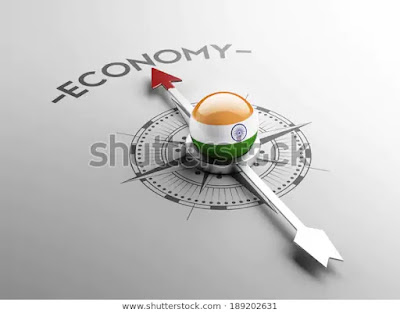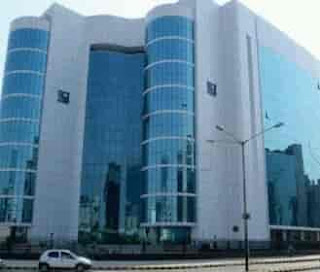Three Significant Segments or Components of New Monetary Approach: UGC Net ,UPSC and other competitive Exam
New Economic policy
There are three significant segments or components of new monetary approach Progression, Privatization, Globalization.
1. Progression:
Monetary progression alludes to the decrease or disposal of government guidelines or limitations on private business and trade.It is typically advanced by supporters of free markets and unhindered commerce, whose belief system is likewise called financial radicalism. Financial advancement additionally regularly includes decreases of expenses, government managed savings, and joblessness benefits.
Financial progression is frequently connected with privatization, which is the way toward moving proprietorship or redistributing of a business, endeavor, office, open assistance or open property from the open segment to the private area.
Progression alludes to end of permit, share and a lot more limitations and controls which were put on enterprises before 1991. Indian organizations got progression in the accompanying manner:
(an) Abrogation of permit with the exception of in few.
(b) No limitation on extension or compression of business exercises.
(c) Opportunity in fixing costs.
(d) Advancement in import and fare.
(e) Simple and improving the technique to draw in remote capital in India.
(f) Opportunity in development of merchandise and enterprises
(g) Opportunity in fixing the costs of merchandise and enterprises.
2. Privatization:
may mean the administration sells state-possessed organizations to private interests, yet it might likewise be talked about with regards to the privatization of administrations or government capacities, where private elements are entrusted with the execution of government projects or execution of taxpayer supported organizations.
Privatization alludes to giving more noteworthy job to private area and decreasing the job of open part. To execute arrangement of privatization government made the accompanying strides:
(a) Disinvestment of open area, i.e., move of open division undertaking to private part
(b) Setting up of Leading body of Modern and Monetary Recreation (BIFR). This block was set to restore wiped out units in open area undertakings enduring misfortune.
(c) Weakening of Stake of the Legislature. In the event that during the time spent disinvestments private part gains over 51% offers then it brings about exchange of proprietorship and the executives to the private division.
3. Globalization:
It alludes to reconciliation of different economies of world . India right now represents 2.7% of world exchange (starting at 2015), up from 1.2% in 2006 as per the World Exchange Association (WTO).Until the advancement of 1991, India was to a great extent and deliberately secluded from the world markets, to ensure its youngster economy and to accomplish confidence. Remote exchange was liable to import duties, send out assessments and quantitative limitations, while outside direct speculation was confined by maximum farthest point value cooperation, limitations on innovation move, trade commitments and government endorsements; these endorsements were required for almost 60% of new FDI in the mechanical sector.The limitations guaranteed that FDI arrived at the midpoint of just around $200M every year somewhere in the range of 1985 and 1991; an enormous level of the capital streams comprised of outside guide, business getting and stores of non-inhabitant Indians.
India's fares were dormant for the initial 15 years after autonomy, because of the prevalence of tea, jute and cotton fabricates, interest for which was commonly inelastic. Imports in a similar period comprised dominatingly of apparatus, hardware and crude materials, because of incipient industrialisation
In1991 Indian government was following exacting strategy with respect to import and outside interest as to permitting of imports, tax, limitations, and so on yet after new arrangement government embraced approach of globalisation by taking after measures:
(I) Import Progression. Government expelled numerous limitations from import of capital products.
(ii) Outside Trade Guideline Act (FERA) was supplanted by Remote Trade The board Demonstration (FEMA)
(iii) Defense of Levy structure
(iv) Abrogation of Fare obligation.
(v) Decrease of Import obligation.
Because of globalization physical limits and political limits remained no boundaries for business undertaking. Entire world turns into a worldwide town.
Globalization includes more noteworthy association and reliance among the different countries of worldwide economy.
Effect of Changes in Monetary Strategy on the Business or Impacts of Advancement and Globalization:
The variables and powers of business condition have part of impact over the business. The normal impact and effect of such changes in business and industry are clarified underneath:
1. Expanding Rivalry:
After the new arrangement, Indian organizations needed to confront all round challenge which implies rivalry from the inward market and the challenge from the MNCs. The organizations which could receive most recent innovation and which were having enormous number of assets could just endure and face the challenge. Numerous organizations couldn't confront the challenge and needed to leave the market.
For instance, Weston Organization which was a pioneer in Т. V. advertise with over 38% offer in T.V. advertise lost its authority over the market as a result of all round challenge from MNCs. By 1995-96, the organization nearly got obscure in the T.V advertise.
2. Additional Requesting Clients:
Preceding new monetary strategy there were not very many businesses or generation units. Accordingly there was lack of item in each part. Due to this lack the market was maker arranged, i.e., makers became key people in the market. Be that as it may, after new financial approach a lot more businesspeople joined the generation line and different outside organizations likewise settled their creation units in India.
Accordingly there was excess of items in each part. This move from lack to surplus acquired another move the market, i.e., maker market to purchaser advertise. The market became client arranged and numerous new plans were made by organizations to pull in the client. These days items are created/produced remembering the requests of the client.
3. Changing Mechanical Condition:
Previously or before new monetary strategy there was a little inside challenge as it were. Be that as it may, after the new monetary approach the world class rivalry began and to stand this worldwide challenge the organizations need to receive the world class innovation.
To receive and actualize the world class innovation the interest in R and D office needs to increment. Numerous pharmaceutical organizations expanded their interest in R and D office from 2% to 12% and organizations began spending an enormous sum for preparing the workers.
4. Need for Change:
Preceding 1991 business endeavors could follow stable arrangements for an extensive stretch of time yet after 1991 the business undertakings need to alter their strategies and tasks now and again.
5. Requirement for Creating HR:
Before 1991 Indian ventures were overseen by deficiently prepared personnel's. New economic situations require individuals with higher fitness ability and preparing. Consequently Indian organizations wanted to build up their human aptitudes.
6. Market Direction:
Prior firms were following selling idea, i.e., produce first and afterward go to advertise yet now organizations follow showcasing idea, i.e., arranging generation based on statistical surveying, need and need of client.
7. Loss of Budgetary Help to Open Division:
Preceding 1991 every one of the misfortunes of Open area were utilized to be made acceptable by government by endorsing exceptional assets from spending plans. Be that as it may, today the open divisions need to endure and develop by using their assets productively in any case these endeavors need to confront disinvestment. All in all the approaches of Progression, Globalization and Privatization have expedited positive effects Indian business and industry. They have become more client center and have begun offering significance to consumer loyalty.
8. Fare a Matter of Endurance:
The Indian representative was confronting worldwide challenge and the new exchange strategy made the outside exchange liberal. Subsequently to win increasingly outside trade numerous Indian organizations joined the fare business and got part of accomplishment in that. Numerous organizations expanded their turnover more than twofold by beginning fare division. For instance, the Dependence Organization, Videocon, MRF, Ceat Tires, and so forth got an incredible hold in the fare advertise.
Stay tuned and subscribed for further article on indian economy
Related links
https://www.iemsnet.com/2020/01/indian-economy-before-independece-ugc.html?m=1
https://www.iemsnet.com/2020/01/indian-economy-after-independence-1950.html?m=1h
https://www.iemsnet.com/2020/01/new-economic-policy-1991-till-date-ugc.html?m=1





Comments
Post a Comment